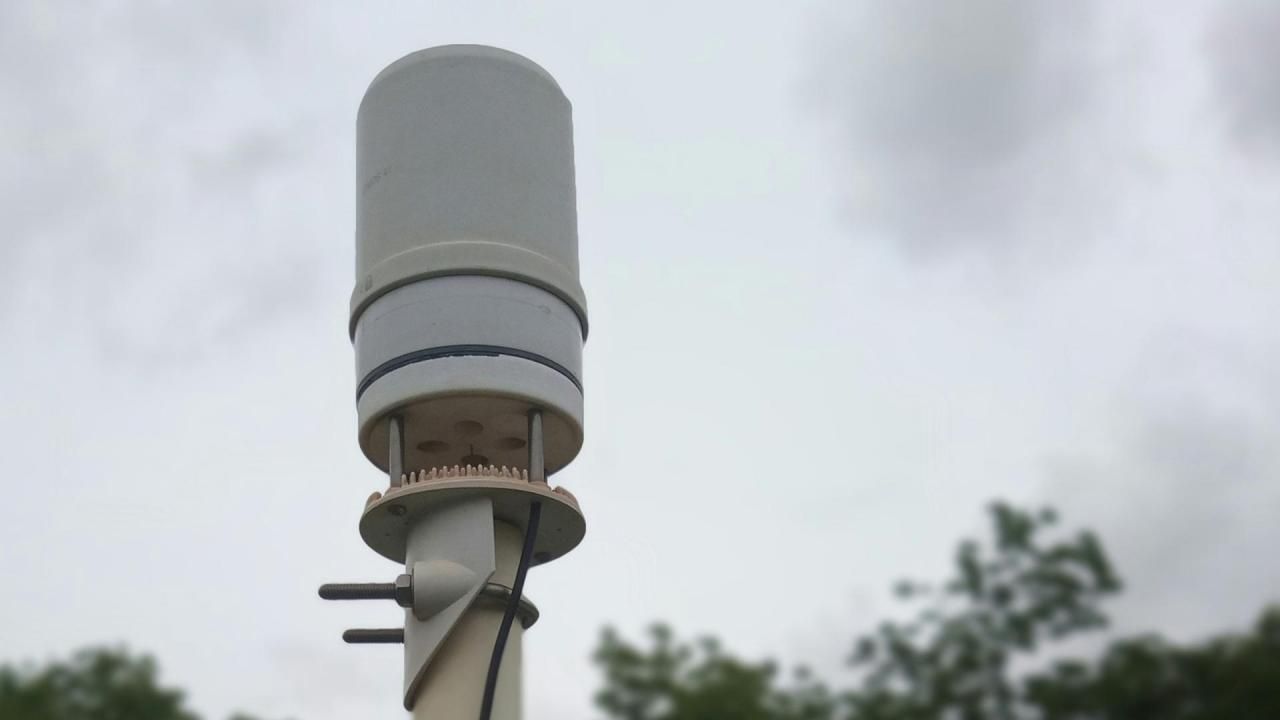Ask the meteorologist: How to build your own weather station

With just a few simple steps, you can measure temperature, rain totals and wind speed from your own home or business.
WRAL meteorologist Kat Campbell explains how to build your own weather station, including how to get accurate readings without breaking the bank.
What is a weather station?
A weather station is any tool used to measure the weather -- whether it's a handmade rain gauge in a kindergarten classroom, a thermometer from the dollar store or a $200 specialty sensor used by a baseball team to measure wind speed.
Anyone can set up a weather station in their own yard, but WRAL meteorologists and other weather professionals depend on weather stations installed at airports across the country to track and predict the weather and report it to viewers.
These "uniform" weather stations at both major and smaller airports are installed and monitored with certain standards, and data is released at specific times.
It's this data that WRAL meteorologists report on television, including temperatures, rain totals, wind speed and more.
"That's what you see us use on TV, the airport observation sites, because we know those weather stations are properly set up," Campbell said.
How to build your own weather station
You can also track wind speed, temperature and rain totals at your own home.
Building a weather station does not have to be expensive, and it can be as easy as mounting a flag pole with a thermometer on it or putting a bucket in your yard before it rains, according to Campbell.
"The most important part of a weather station is how you set it up as opposed to how much money you spend on it," she said.
In fact, you may already have the most popular type of weather station at your home -- a basic thermometer.
1. Track temperature
Tracking outdoor temperatures is the most popular kind of weather monitoring setup people have at their homes, according to Campbell.
Getting an accurate reading isn't about how much money you spend; it's about how you install the thermometer.
Measure an accurate temperature by taking the following steps:
- Mount your thermometer 6 feet above the ground, such as on a flagpole
- Mount your thermometer in the shade, as sunlight can give false readings
- Mounting your thermometer above grass, not pavement, which can release heat
You can buy a thermometer from any store, but a popular kind of outdoor thermometer used by homeowners comes with a small box that uses Wi-Fi to show users the temperature reading on a small indoor screen. This one is sold at Costco for $39.
2. Track rainfall
Another popular weather station tool is a rain gauge, which may be especially of interest to gardeners or homeowners growing new grass. It can also be interesting to see the difference in rain totals at your house versus your friend's home 15 minutes away after a storm -- because rain totals are so varied, even in the same area.
Rain gauges can be purchased at any store, and they're less work to install than mounted thermometers.
Measure an accurate rainfall total by taking the following steps:
- Empty the gauge after each rainfall event.
- Avoid skinny rain gauges. Those measuring at least 8 inches in diameter are best, according to NOAA. The wider gauges get more accurate readings because of wind.
- Try to keep it in a more open place and avoid mounting it on your porch where your home can obstruct some of the rain drops from reaching the gauge. Instead, try to keep it in your garden or backyard.
3. Track wind speed
A third weather station some people use is an anemometer to measure wind speed. This tool can be slightly more expensive than basic thermometers and rain gauges, but it is available to buy online starting at around $15.
The average homeowner may not need an anemometer, but one might come in handy at a golf course or for people who like to create bonfires in their yard and need to know if it's too windy to start a fire safely.
According to Campbell, you can measure an accurate wind speed by keeping the anemometer in an open field as opposed to between homes or in an alley, which could create a wind tunnel effect.
The National Weather Service has a guide to wind speeds and what they mean.
The best weather station
Measuring temperature, rain and wind speed at home can be fun and useful for anyone, but people who want to spend more money or monitor the weather more seriously can purchase an all-in-one weather station like the Tempest, which is available for $339.
How you can help meteorologists
Those who track rainfall at their home regularly can sign up for CoCoRaHS, a volunteer-based organization made up of trained volunteers who report rain and snow totals that can be used by meteorologists and other weather professionals. This shared data is especially useful if provided by people in small towns, which may be lacking in data.
The best way to monitor the weather, especially when preparing for severe storms, is by using weather-tracking websites like WRAL.com.
Viewers can use WRAL.com or the WRAL News app to find:
- Live cameras showing current weather conditions across the state
- Futurecast, both day and night
- Current temperatures and the heat index, or how hot it will feel
- Wind speeds and wind gusts
- The 7-day forecast and much more
You can also download the WRAL News app to get alerts on your phone during severe weather, even when you lose power.









